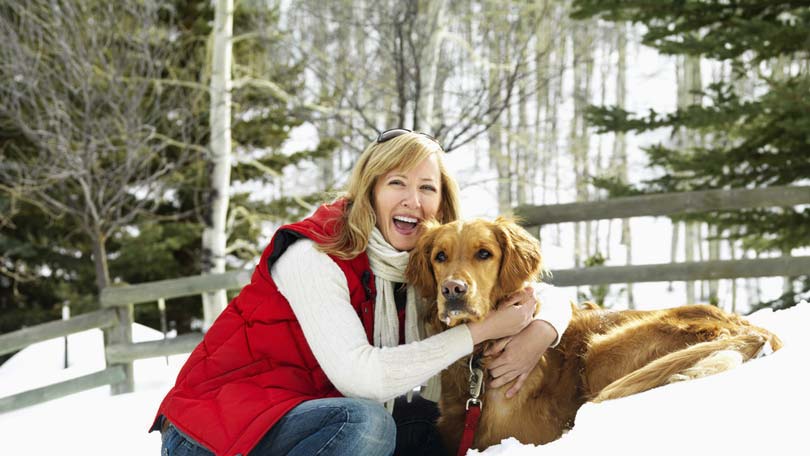
Vision: To be recognized as world leaders in animal control, bylaw development and compliance.
Mission: To encourage a safe, healthy, vibrant community for people and pets through the development, education, and compliance of bylaws that reflect community values.
Mandate: Focus on voluntary compliance to Calgary’s bylaws through education and programs to support citizens and the community.
Manage an animal shelter and provide animal control services.
Ensure compliance with the community’s bylaws.’
~ City of Calgary – Animal & Bylaw Services
Why are Calgary’s animal welfare programs so successful?
“Collaboration.”
“Collaboration.”
“I can sum it up in one word – collaboration.”
Came the unmitigated, unanimous, and un-collaborated, answers from the three of the top rescue organizations in the city. Bill Bruce, Director of Animal & Bylaw Services for the City of Calgary, Desiree Arsenault, Manager of Communications for the Humane Society of Calgary, and Debbie Nelson, the Executive Director of MEOW, all enthusiastically agree that the success is based on the various animal rescue organizations working together for the betterment of the city’s animals.
“Ten years ago we brought everyone to the table,” explains Bill Bruce. ‘Everyone’ included veterinarians, rescue organizations, trainers, dog breeders, cat fanciers, and behaviorists. “We stopped the fighting between the organizations.”
The outdated animal services model Calgary, and most cities, was working with at the time was not sustainable.
“We needed to develop a responsible pet ownership model and asked ourselves ‘how can we put ourselves out of a job?’” laughs Bruce.
The City of Calgary Animal Services responsible ownership model works on four basic principles:
- Pet licenses are a ‘ticket home’ for lost pets
- Spay/neuter family pets
- Provide socialization, a good diet, and ample exercise
- Don’t let your pet become a nuisance – deal with the problem before it becomes an issue
To support the community under the umbrella of these four principles, the city developed groundbreaking programs that removed barriers and helped establish strong communication and respect for bylaw officers.
In many cities, the licensing of dogs is viewed not as a way of returning pets to their homes but as a way of keeping track of where the potentially dangerous dog may live. An animal control officer in Victoria, BC was quoted by a local reporter that he wanted to see all dogs licensed so that he ‘would know where all the pitbulls are in the city’, not as a way of reuniting lost pets with their families.
Instead, Calgary calls their dog and cat licensing program as the pet’s ‘ticket home’. Since the start of the pet cat licensing program came into effect in 2007, euthanasia is down by nearly 20% and many lost animals are reunited with their families without ever stepping paw into the shelter. Instead, they are driven straight home and returned to their owners.
And although there is an impound fee, rarely are tickets handed out.
“Instead, we ask how did the pet get out and what can we do to help,” explains Bruce. This is a more cost effective model for both the city and the owner as well as lessening the chance of any negative interactions between the community and bylaw officers.
Spay and neuter programs are common in most cities and Calgary is no different. All animals are ‘fixed’ before leaving the shelter and the number of animal intakes is dramatically lowered by providing assistance to low-income families and challenged neighborhoods.
Principles three and four of the new responsible ownership model were based on the observation that the majority of the animals turned over to the shelters were socialized. They were not unwanted or feral animals – someone had taken the time to train and work with the pet. This was not a pet overpopulation problem but a human/animal relationship that failed. Along with the spay/neuter program to actively lower the number of animals in the city, it was vital to change how animals were valued and support the community in order that they were able to keep the animals they already have.
Many ideas sprung from this change in approach:
- School and public education programs developed, delivered by board certified teachers as part of a curriculum.
- Vaccinating all animals as they enter the shelter (unless proof provided that it was unnecessary).
- Increase the level of adoptability of animals by improving their health if applicable, retraining as needed and rehabilitating animals in some cases.
- Provide a six-month free license for all adopted animals.
- Teach and assist owners to recognize early indicators of problems in their pet and help assess and rehabilitate the animal before it becomes an issue.
The last is the most important, and most difficult, part of the program. Many owners do not recognize the early indicators of bad behavior until it escalates into a dangerous or frustrating scenario that they can no longer handle on their own. However, many of these behaviors, once recognized, can be trained out of their pet, nullifying the need to rehome, or in severe cases, euthanize an otherwise happy and healthy animal.
Problem behavior does not always refer to dangerous or aggressive behavior either. A barking dog can quickly lead from frustrated neighbors to a nuisance order to eventually giving the pet up for adoption. Instead, animal services works with the owner to correct the bad behavior and keep the pet where it belongs – in the family home.
Calgary is also unique in that they have not jumped on the Breed Specific Legislature (BSL) bandwagon like many large cities. There are also no limits on how many animals a person can own. In both cases, a responsible owner is just that – a responsible owner.
BSL tries to blame the breed for any dangerous or aggressive behavior when in fact any breed can be dangerous. Pitbulls are a wonderful family pet, once known as the ‘nanny dog’ for how well they interacted with children. However, they are often demonized as dangerous when in reality, if a responsible owner dog owned the same, there would not be a problem. Any breed of dog, mistreated or mis-trained, can be dangerous – just ask the mailperson who was attacked and severely ravaged by the pack of Chihuahuas in eastern Canada.
Limiting the number of animals in a household is also not necessary if the owner is responsible and monitors their pets’ behavior. If an owner is capable of keeping three dogs quiet, well behaved, healthy, and happy, who is to say they cannot do the same for four dogs? However, should the person who cannot control their one dog be allowed to adopt up to two because they have not reached their limit? Animal limits do not make for a peaceful neighborhood; responsible ownership is what guarantees a safe, quiet, happy neighborhood for everyone.
The Cost of Irresponsible Pet Ownership
The Calgary animal services model is a success and one that many other communities strive to duplicate. However, there is still an exorbitant cost in providing animal rescue to a city of 1,079,310 people (2010).
There are dozens of animal rescue organizations in Calgary that collaborate on building a responsible pet ownership community. We spoke with three and asked them to provide accurate, measurable numbers to help demonstrate the uphill battle cities face.
Cost to run each shelter per year:
| Shelter | Cost to run shelter per year | Number of animals per year |
| City of Calgary Animal Services | $5.3 million | Dogs – 4320 Cats – 869 |
| Humane Society of Calgary | $5,975,840 | Dogs – 1553 Cats – 5209 Rabbits – 338 Other – 536 Total animals – 7666 |
| MEOW Foundation | Approximately $700 per cat | Cats – 600 to 700 |
| ARF | Not applicable as there is no shelter facility. 100% foster home/volunteer housing rescue organization | Dogs – 300 Cats – 25 |
| Shelter | Volunteer Hours per year | Number of Foster Homes |
| City of Calgary Animal Services | 1000s of hours | n/a |
| Humane Society of Calgary | 47,138 Foster = 27,643 |
300 but need more! |
| MEOW Foundation | Cat care hours = 35,000+ Fundraising hours = 1248 Facility/maintenance = 172 Admin hours = 4070 |
50 to 60 active foster homes during peak kitten season, 30 to 40 for rest of year |
| ARF | 1000s of hours. ARF is entirely foster home managed so volunteers often put in a full days work on top of their full time jobs! | 20 foster homes & needs more! Has 4 holding areas for puppies/litters that are too young or too sick for immediate adoption or foster home placement. |
There is obviously far more involved in building a responsible pet ownership community and the success is dependent on the people involved. From progressive directors who realize that a program may always be improved upon to the indispensible volunteers and foster families that take up the ‘slack’ through the sheer goodness of their hearts, Calgary’s animals waiting to be rehomed are in good hands.
‘Judge a society by how it treats its animals.’ ~ Mahatma Ghandi
* A big thanks goes out to Bill Bruce, Director of Animal & Bylaw Services for the City of Calgary, Desiree Arsenault, Manager of Communications for the Humane Society of Calgary, Debbie Nelson, the Executive Director of MEOW, and ARF for assisting with this article.
– Calgary Humane Society
– Calgary Animal Services
– Meow Foundation
– ARF





